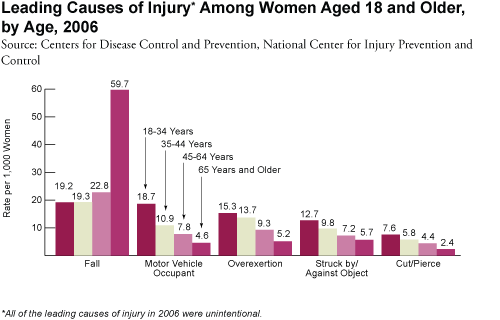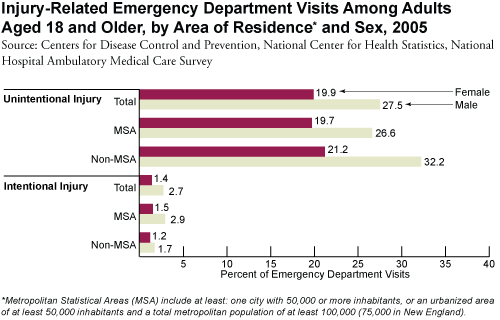To: The Editor, Family Violence Newsletter, Public Health Agency of Canada ncfv-cnivf@phac-aspc.gc.ca,
Minister of Health Aglukkaq.L@parl.gc.ca
I am very disappointed that a Federal Government agency would publish such a blatantly sexist newsletter. You purport that Family Violence is a gender specific behaviour in that men are violent and women benign. You would purport to indoctrinate boys in the mythology that family violence is gender specific when that boy may be subject to violence from his mother. What an astoundingly arbitrary, confusing and anti-male message. When will governments wake up and see that the teaching should be holistic in that violence against any family member, or any one else is wrong.
It reads as though you took it right from one of the feminist manuals at a local DV centre. I expect more from the very large amount of tax dollars I, and most other men pay in this country.
You have used percentages of men who support various aspects of eliminating violence against women. I would first suggest what person wouldn't support stopping violence against any gender at any age. Secondly, can you provide the study or poll source used to obtain these percentages with its context.
There is a mountain of evidence showing female violence exists and is equal to men. In some studies (CDC USA) it shows female perpetration in 70% of cases. http://pn.psychiatryonline.
In 2006, the University of New Hampshire surveyed people in 32 nations (covering all continents and both developed and developing nations) and found women are as violent and as controlling as men in dating relationships. See the University’s News Release or the actual study.
You may wish to obtain Canadian research information compiled by Dr. Don Dutton, PHD, Professor of Psychology at UBC This is an abstract from one paper by Dutton and Corvo 2006, Transforming a flawed policy: A call to revive psychology and science in domestic violence research and practice “Simply put, the evidence for theoretical patriarchy as a “cause” of wife assault is scant and contradicted by numerous studies: male dominant couples constitute only 9.6% of all couples (Coleman & Straus, 1985); women are at least as violent as men (Archer, 2000); women are more likely to use severe violence against nonviolent men than the converse (Stets & Straus, 1992a,b); powerlessness rather than power seems related to male violence; there are data contradicting the idea that men in North America find violence against their wives acceptable (Dutton, 1994; Simon et al., 2001) and that abusiveness is higher in lesbian relationships than in heterosexual relationships (Lie, Schilit, Bush, Montague, & Reyes, 1991) suggesting that intimacy and psychological factors regulating intimacy are more important than sexism (Dutton, 1994)...”
You must know about this study by Stats Can from a 2004 Social Survey. Family violence in Canada: A statistical profile, 2005. An estimated 7% of women and 6% of men representing 653,000 women and 546,000 men in a current or previous spousal relationship encountered spousal violence during the five years up to and including 2004, according to a comprehensive Statistics Canada report on family violence. http://www.statcan.gc.ca/
Your agency published this report so you clearly know about violence against males. "Intimate Partner Abuse against Men" was prepared by Dr. Eugen Lupri and Dr. Elaine Grandin for the National Clearinghouse on Family Violence. http://www.phac-aspc.gc.ca/
In the USA and Australia single moms are the greatest abusers and killers of their children. It is similar in Canada according to independent studies with the exception of sex abuse.
I have yet to figure out the incongruity regarding the emphasis on the female gender when the far greater number of victims is men and 27% of the victims of domestic homicide are men based on the 2008 stats. Could it be, through feminist discourse, they have convinced most people they are more important than men? I would also point out that many male homicide victims, who may have been killed by or through the actions of an intimate partner is not classified as domestic. In 2007, as an example, a London Police inspector Kelly Johnson, killed her boyfriend then shot herself and this was not declared a Domestic Homicide but to any reasonable person outside the filtered universe of the Police Chief of London or Coroner's Inquest it has all the appearances that fit the usual criteria . Coroner's Inquests in many cases have as a majority of members feminists from the Ontario Provincial AG's department, Academia and from DV shelters. One cannot expect to see a balanced decision in Ontario. I am suggesting some of the men over and above the 17 shown were victims of family violence but were left out of "Domestic Homicides" for a variety of reasons, one of which has been described.
Canadian Homicide Stats 2008, http://www.statcan.gc.ca/
Total 611, 465 men 146 female Rate of homicides with firearms has increased 24% since 2002. Handgun use on increase (gang related even though handguns are controlled and registered)
Women victims 24% - lowest proportion ever Men Victims 76%
Both the rate of females killed (0.87 per 100,000 population), as well as the proportion (24%), were the lowest since 1961
62 spousal homicides - no change from 2007 Lowest rate in 40 years, 45 women 17 men
I'm interested in seeing more balance from my government when it comes to family violence.
In the USA and Australia single moms are the greatest abusers and killers of their children. It is similar in Canada according to independent studies with the exception of sex abuse.
I have yet to figure out the incongruity regarding the emphasis on the female gender when the far greater number of victims is men and 27% of the victims of domestic homicide are men based on the 2008 stats. Could it be, through feminist discourse, they have convinced most people they are more important than men? I would also point out that many male homicide victims, who may have been killed by or through the actions of an intimate partner is not classified as domestic. In 2007, as an example, a London Police inspector Kelly Johnson, killed her boyfriend then shot herself and this was not declared a Domestic Homicide but to any reasonable person outside the filtered universe of the Police Chief of London or Coroner's Inquest it has all the appearances that fit the usual criteria . Coroner's Inquests in many cases have as a majority of members feminists from the Ontario Provincial AG's department, Academia and from DV shelters. One cannot expect to see a balanced decision in Ontario. I am suggesting some of the men over and above the 17 shown were victims of family violence but were left out of "Domestic Homicides" for a variety of reasons, one of which has been described.
Canadian Homicide Stats 2008, http://www.statcan.gc.ca/
Total 611, 465 men 146 female Rate of homicides with firearms has increased 24% since 2002. Handgun use on increase (gang related even though handguns are controlled and registered)
Women victims 24% - lowest proportion ever Men Victims 76%
Both the rate of females killed (0.87 per 100,000 population), as well as the proportion (24%), were the lowest since 1961
62 spousal homicides - no change from 2007 Lowest rate in 40 years, 45 women 17 men
I'm interested in seeing more balance from my government when it comes to family violence.
Mike Murphy
This edition of the National Clearinghouse on Family Violence (NCFV) E-bulletin focuses on engaging men and boys in the prevention of family violence. We highlight current efforts in communities across Canada and around the world working to involve men - as fathers, friends, educators, coaches and leaders - to play an active role in addressing gender-based violence and promoting healthy, equal relationships.
The NCFV E-bulletin is a bi-monthly newsletter for those interested in family violence prevention. It is produced by PHAC, on behalf of the Family Violence Initiative (FVI) of the Government of Canada.
We want to hear from you – please send your comments and feedback to our editor at: ncfv-cnivf@phac-aspc.gc.ca.
Men’s Perspectives on Violence Against Women
There are encouraging research findings about men’s recognition of their role in addressing violence against women and their perspectives on efforts by institutions and groups to address it. For example, a national poll1 in Canada showed that:
- Sixty-six percent of Canadian men feel that men are not doing enough to address the problem of violence against women in Canada.
- The vast majority of men support tough enforcement of existing laws; seventy-five percent say rigorously enforcing existing laws should be a high priority.
- Sixty-nine percent of men say that programs targeted towards school-aged boys about ending violence toward women and promoting healthy relationships should be a high priority.
- A majority of men (62%) say that raising the awareness of men regarding the need to take a stand against violence towards women should be a high priority.
- Men also support increasing funding to women’s groups and facilities addressing violence against women, with 45% saying it is a high priority and 42% saying it is a medium priority.
- Nearly all men (88%) agree that society should do more to respect women and girls.
- Most men say that many institutions should be doing more to raise awareness and address domestic violence and sexual assault: the entertainment industry (83%), lawmakers (78%), the sports industry (72%), schools (68%), colleges and universities (67%), news media (65%) and employers (61%).
- Fifty-seven percent of men believe that they can make a difference in preventing domestic violence and sexual assault, and 73% of men think they can make some difference in promoting healthy, respectful, non-violent relationships among young people.
- Sixty-eight percent of fathers have talked to their sons about the importance of healthy, violence-free relationships.
2. Father's Day Poll 2007, Peter D. Hart Research Associates, Inc.
Increasing Public Awareness about the Role of Men in Preventing Violence
There is a growing emphasis in Canada and in other countries on the importance of engaging men and boys in addressing violence against women. To increase awareness and encourage changes in attitudes and behaviours, some governments and organizations have introduced violence prevention campaigns that focus on the role of men in educating boys about gender equality and healthy relationships.
For example, Newfoundland and Labrador's Violence Prevention Initiative launched a multi-media campaign that encourages men to teach the boys in their lives about showing respect, fairness and equality towards women. The Respect Women campaign consists of posters, print and television ads, as well as a respectwomen.ca website. It positions men as role models who can deliver positive messages to their sons, grandsons, nephews and younger brothers. Key messages include that:
- men have a responsibility to nurture and shape the beliefs, attitudes and values of boys, and
- violence against women, in any form, is unacceptable.
- being a caring father means educating your son about healthy and equal relationships, and
- educators have a role to play in teaching boys the language of equality and fostering leadership in male students and colleagues.
For additional campaigns organized by or aimed at men to prevent violence against women, please see:
- Coaching Boys into Men, a media campaign by the Family Violence Prevention Fund that encourages men to teach boys early, and teach them often, that violence never equals strength.
- Man Up, an international campaign that mobilizes young leaders in a movement to stop violence against women and girls.
- Network of Men Leaders, a new initiative of the United Nations campaign, UNiTE to End Violence against Women.







No comments:
Post a Comment